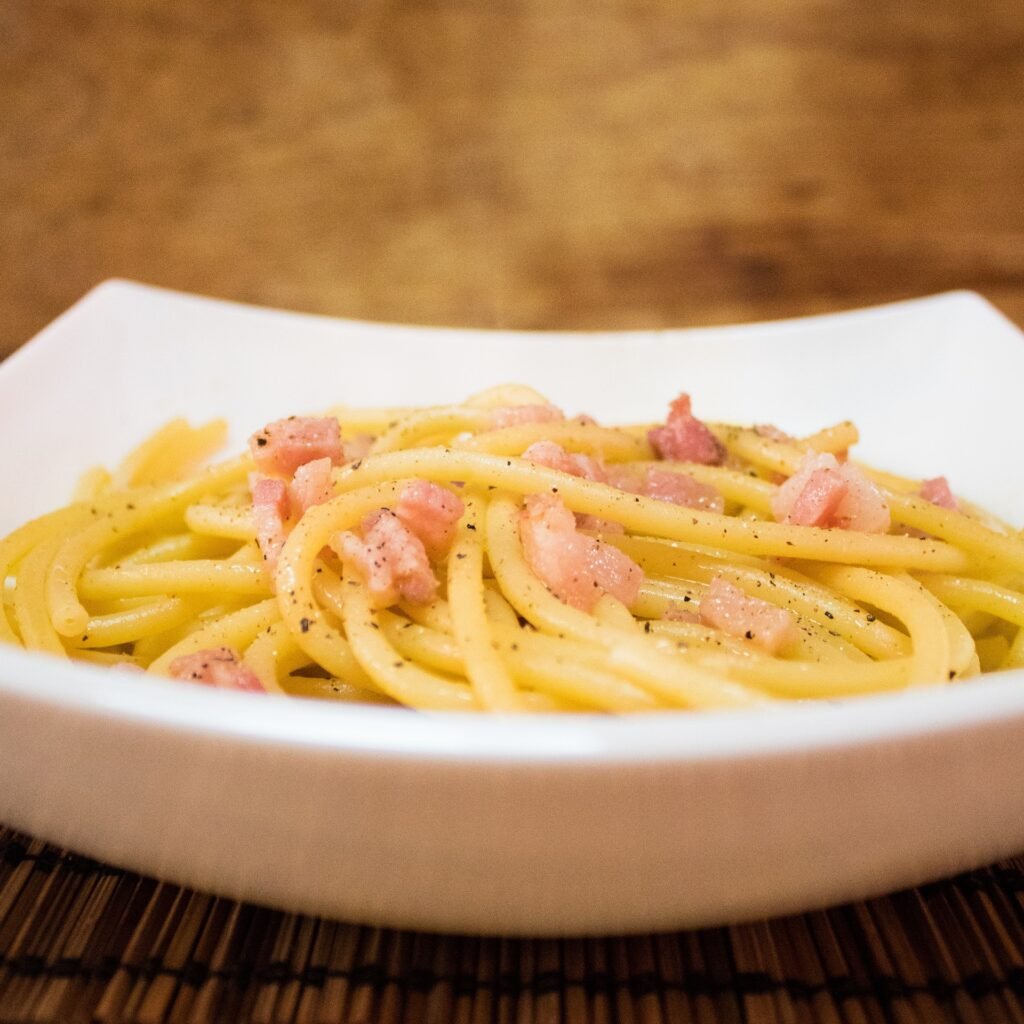Rome isn’t just a city of ancient ruins and Renaissance art—it’s a living, breathing culinary masterpiece. Every cobblestone street, every corner café, every bustling trattoria tells a story of tradition, simplicity, and deep, soulful flavor. In the Eternal City, food is not rushed—it’s celebrated. Whether you’re twirling pasta in a backstreet osteria or biting into a crisp slice of Roman pizza, you’re participating in centuries of gastronomic history.
Rome invites foodies to slow down, savor, and eat like the Italians do—con gusto.
🍝 Pasta: Rome’s Holy Trinity
Rome is home to four iconic pasta dishes, each with its own loyal fanbase and proud history. These aren’t just meals—they’re edible monuments.
The Big Four:
- Cacio e Pepe – Pecorino Romano cheese and black pepper. Simple, creamy, peppery perfection.
- Carbonara – Eggs, Pecorino, guanciale (cured pork cheek), and black pepper. No cream—ever.
- Amatriciana – A spicy, tomato-based sauce with guanciale and Pecorino.
- Gricia – A white version of Amatriciana, without tomatoes.

Where to try them:
- Felice a Testaccio – Known for its legendary cacio e pepe.
- Trattoria Da Enzo al 29 – Classic Roman pasta in Trastevere with a local feel.
- Osteria dell’Ingegno – Refined and central, with a great view of Piazza di Pietra.
Pro tip: Order “al dente”—Romans like their pasta firm and toothsome.
🍕 Pizza al Taglio: Rome’s Grab-and-Go Glory
While Naples gave the world the soft, doughy Neapolitan pizza, Rome perfected the crispy, square slice. Pizza al taglio, or “pizza by the cut,” is sold by weight and topped with everything from potatoes and rosemary to zucchini blossoms and anchovies.
Where to grab a slice:
- Pizzarium by Gabriele Bonci – The most famous, with gourmet toppings and artisanal dough.
- Forno Campo de’ Fiori – An old-school bakery turning out crisp, oil-brushed slices fresh from the oven.
Also try pizza tonda, Rome’s sit-down version: thin, blistered, and perfectly round, often served in pizzerias with paper-thin crust and minimal toppings.
🧀 Market Culture & Roman Street Food
Rome’s open-air markets are a dream for food lovers. Wander through piles of produce, smell fresh herbs, taste sun-dried tomatoes, and chat with vendors proud of their goods.
Markets to Explore:
- Campo de’ Fiori – Tourist-friendly but atmospheric and historic.
- Testaccio Market – Loved by locals, packed with incredible food stalls.
- Mercato Trionfale (Vatican area) – A local favorite with great prices and variety.
Street Eats to Try:
- Supplì – Fried rice balls filled with tomato sauce and mozzarella.
- Trapizzino – A pizza-dough pocket filled with Roman stews like chicken cacciatore.
- Porchetta Sandwich – Roasted pork stuffed with herbs, best eaten from a roadside cart.
🍰 Sweets & La Dolce Vita
Rome knows how to end a meal with sweetness. Dessert isn’t just a treat—it’s a ritual.
Classic Roman Sweets:
- Tiramisu – A creamy, coffee-soaked dream. Try it at Bar Pompi.
- Maritozzo – A sweet bun filled with whipped cream, often eaten at breakfast.
- Gelato – Not all gelato is equal. Go artisanal.
Best gelato spots:
- Gelateria del Teatro – Creative, all-natural flavors.
- Otaleg (that’s “gelato” spelled backward) – Known for high-quality ingredients and intense flavor.
Pair your sweets with an espresso—short, strong, and never with milk after 11 a.m.
🍷 Wine, Aperitivo & Roman Rituals
Romans love to drink—socially, leisurely, and with food. Start your evening with an aperitivo, the Italian version of happy hour, usually including a drink and light snacks.
Roman drinks to know:
- Aperol Spritz – Light, citrusy, and perfect before dinner.
- Frascati – A crisp white wine from the Roman countryside.
- Negroni – A strong cocktail of gin, vermouth, and Campari.
Try aperitivo in Trastevere or Monti, where small wine bars and piazzas come alive in the golden hour.
🧭 Tips for Foodies in Rome
- Don’t rush. Meals in Italy are about pleasure, not speed.
- Avoid tourist traps near big landmarks. Walk a few blocks and follow locals.
- Order house wine. It’s usually great and much cheaper than bottled labels.
- Always leave room for gelato.
Rome is eternal in every sense, and its food is no exception. Rooted in tradition but always evolving, Roman cuisine invites you to taste the rhythms of life: fresh ingredients, slow meals, and bold simplicity.
If you’re hungry for culture, character, and a carb-loaded good time, Rome will feed your body and your spirit.
































